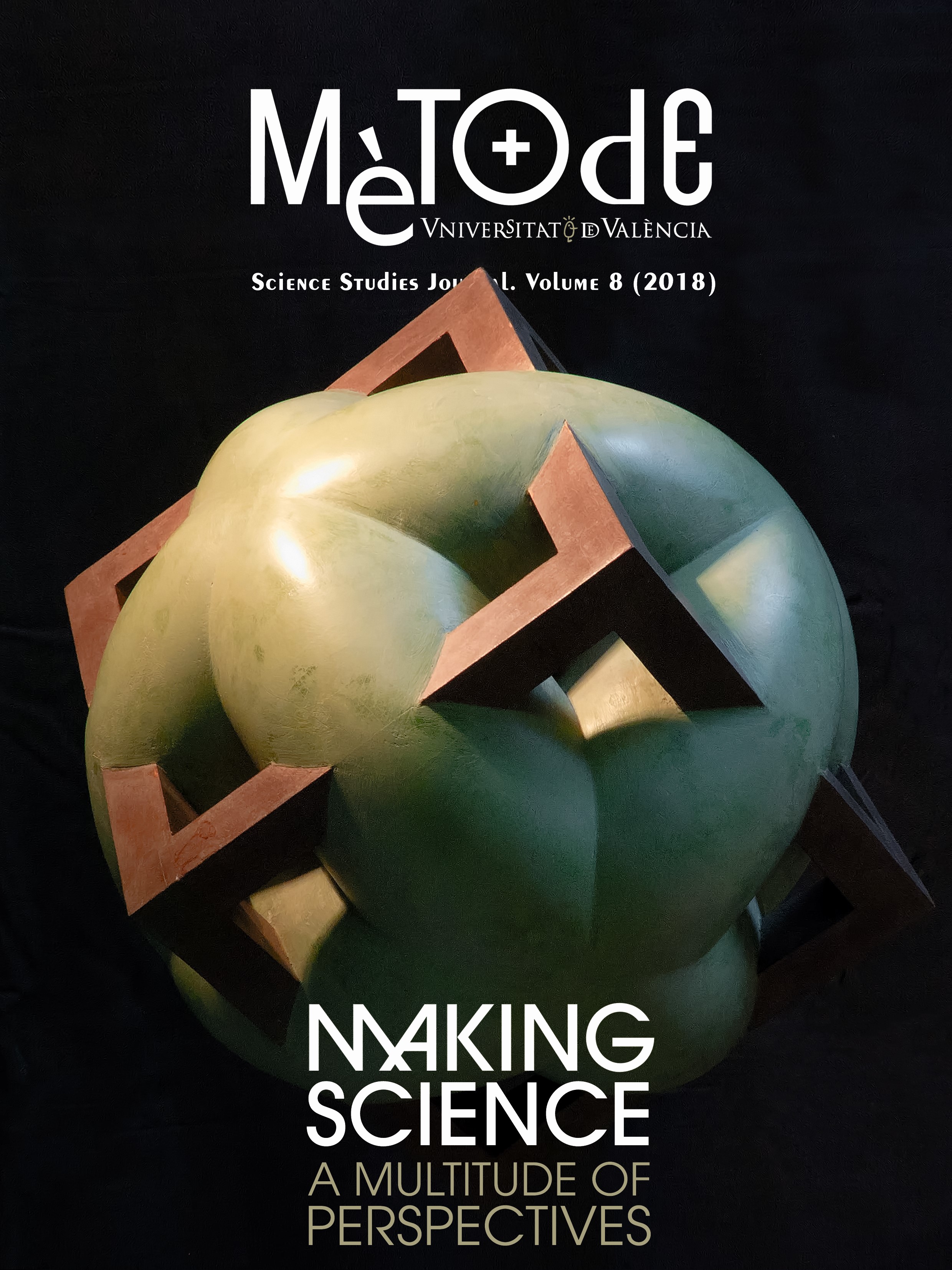‘Homo sapiens’: who are we? Essential traits of our species
DOI:
https://doi.org/10.7203/metode.8.9481Keywords:
hominisation, humanisation, singularity, tools, language, complexity, species Abstract
Abstract
In this text we analyse the traits, from their genesis, that constitute current human beings with the objective of characterising the biological and cultural evolution of humanity within the evolutionary framework of our genus. Paleoanthropologists organise our differential traits within the animal kingdom hierarchically: the ability to manufacture a wide range of tools and control fire, language, funeral rituals, etc. However, whether these increases in complexity occurred only in our species or if it is a process which other species have also undergone, or will undergo, remains to be explored.
 Downloads
Downloads
 References
References
Agustí, J., & Carbonell, E. (2013). L’evolució sense sentit. Barcelona: Empúries.
Arsuaga, J. L., Martínez, I., Gracia, A., Carretero, J. M., & Carbonell, E. (1993). Three new human skulls from the Sima de los Huesos Middle Pleistocene site in Sierra de Atapuerca, Spain. Nature, 362, 534–537. doi: 10.1038/362534a0
Bermúdez de Castro, J. M., Arsuaga, J. L., Carbonell, E., Rosas, A., Martínez, I., & Mosquera, M. (1997). A hominid from the Lower Pleistocene of Atapuerca, Spain: Possible ancestor to Neanderthals and modern humans. Science, 276(5317), 1392–1395. doi: 10.1126/science.276.5317.1392
Bermúdez de Castro, J. M., Martinón-Torres, M., Martín-Francés, L., Modesto-Mata, M., Martínez de Pinillos, M., García, C., & Carbonell, E. (2017). Homo antecessor: The state of the art eighteen years later. Quaternary International, 433, 22–31. doi: 10.1016/j.quaint.2015.03.049
Carbonell, E., Mosquera, M., Ollé, A., Rodríguez, X. P., Sala, R., Vergès, J. M., … Bermúdez de Castro, J. M. (2003). Les premiers comportements funéraires auraient-ils pris place à Atapuerca, il y a 350 000 ans? L’Anthropologie, 107(1), 1–14. doi: 10.1016/S0003-5521(03)00002-5
Chomsky, N. (1985). El conocimiento del lenguaje. Madrid: Alianza Editorial.
D’Errico, F., & Nowell, A. (2000). A new look at the Berekhat Ram figurine: Implications for the origins of symbolism. Cambridge Archaeological Journal, 10, 123–167. doi: 10.1017/S0959774300000056
Gillespie, R. (2002). Dating the first Australians. Radiocarbon, 44, 455–472. doi: 10.1017/S0033822200031830
James, S., Dennell, R., Gilbert, A., Lewis, H., Gowlett, J., Lynch, T., ... James, S. (1989). Hominid use of fire in the Lower and Middle Pleistocene: A review of the evidence [and comments and replies]. Current Anthropology, 30(1), 1–26.
Krause, J., Fu, Q., Good, J. M., Viola, B., Shunkov, M. V., Derevianko, A. P., & Pääbo, S. (2010). The complete mitochondrial DNA genome of an unknown hominin from southern Siberia. Nature, 464, 894–897. doi: 10.1038/nature08976
Krause, J., Lalueza-Fox, C., Orlando, L., Enard, W., Green, R. E., Burbano, H. A., … Pääbo, S. (2007). The derived FOXP2 variant of modern humans was shared with neandertals. Current Biology, 17(21), 1908–1912. doi: 10.1016/j.cub.2007.10.008
Martínez, I., Rosa, M., Arsuaga, J.-L., Jarabo, P., Quam, R., Lorenzo, C., … Carbonell, E. (2004). Auditory capacities in Middle Pleistocene humans from the Sierra de Atapuerca in Spain. Proceedings of the National Academy of Sciences, 101(27), 9976–9981. doi: 10.1073/pnas.0403595101
Pettitt, P. B. (2002). The Neanderthal dead: Exploring mortuary variability in Middle Paleolithic Eurasia. Before Farming, 1(4), 1–17. doi: 10.3828/bfarm.2002.1.4
Shea, J. J., Fleagle, J. G., Brown, F. W., Assefa, Z., Feibel, C. & McDougall, I. (2002). Archaeological reconnaissance of the Omo Kibish Formation, Ethiopia. Journal of Human Evolution, 42, A33–A34.
Thieme, E. (1997). Lower Paleolithic hunting spears from Germany. Nature, 385, 807–810. doi: 10.1038/385807a0
White, T. D., Asfaw, B., DeGusta, D., Gilbert, H., Richards, G. D., Gary. D., … Clark Howell, F. (2003). Pleistocene Homo sapiens from Middle Awash, Ethiopia. Nature, 423, 742–747. doi: 10.1038/nature01669
Whitfield, J. (2008). Evolución. El gen del “lenguaje”, FOXP2, parece esencial para la vocalización animal. Investigación y Ciencia, 379, 10–11.
Downloads
Published
How to Cite
-
Abstract2304
-
PDF1227
Issue
Section
License
![]()
All the documents in the OJS platform are open access and property of their respective authors.
Authors publishing in the journal agree to the following terms:
- Authors keep the rights and guarantee Metode Science Studies Journal the right to be the first publication of the document, licensed under a Creative Commons Attribution-NonCommercial-NoDerivatives 4.0 International License that allows others to share the work with an acknowledgement of authorship and publication in the journal.
- Authors are allowed and encouraged to spread their work through electronic means using personal or institutional websites (institutional open archives, personal websites or professional and academic networks profiles) once the text has been published.





